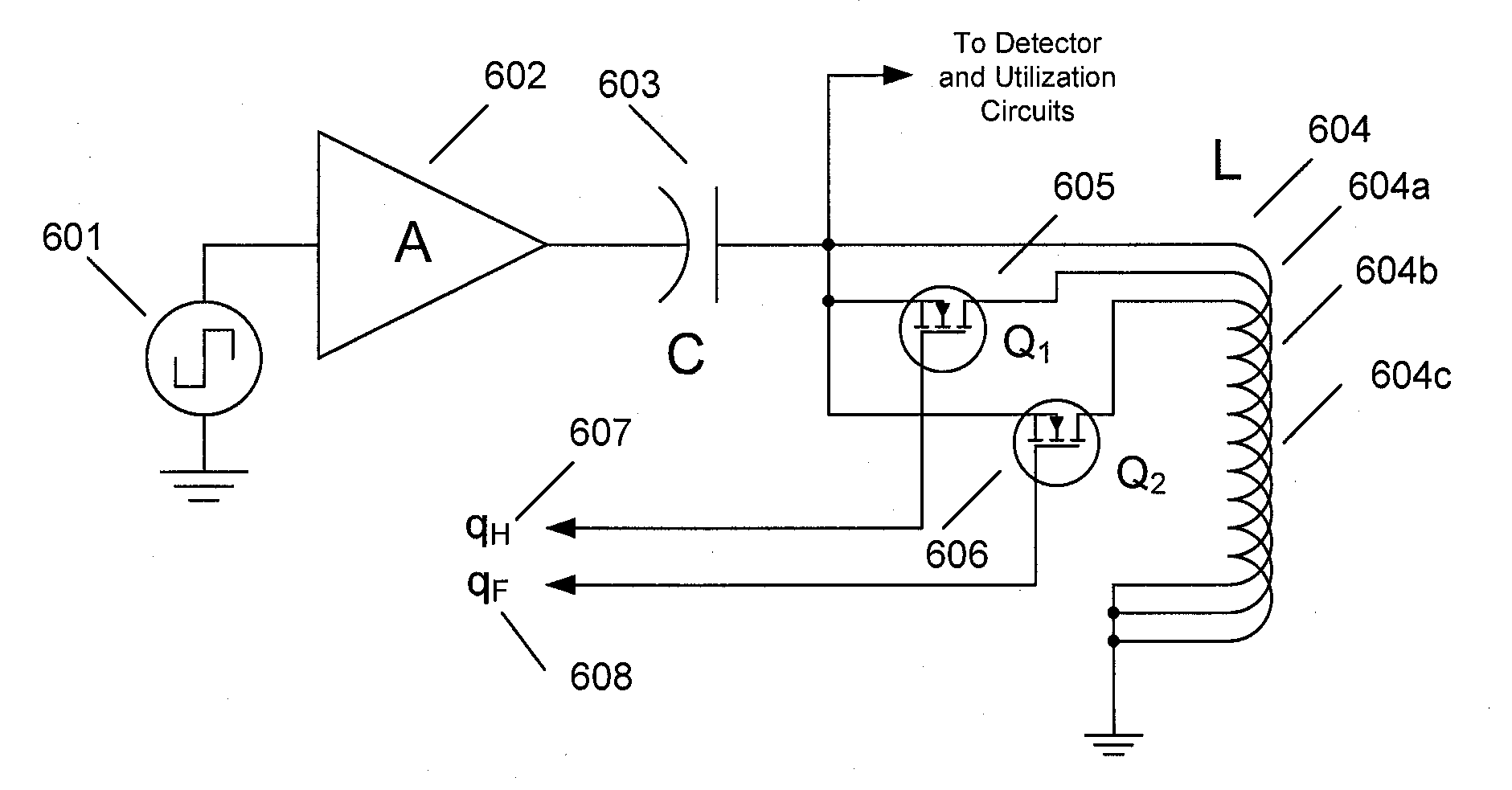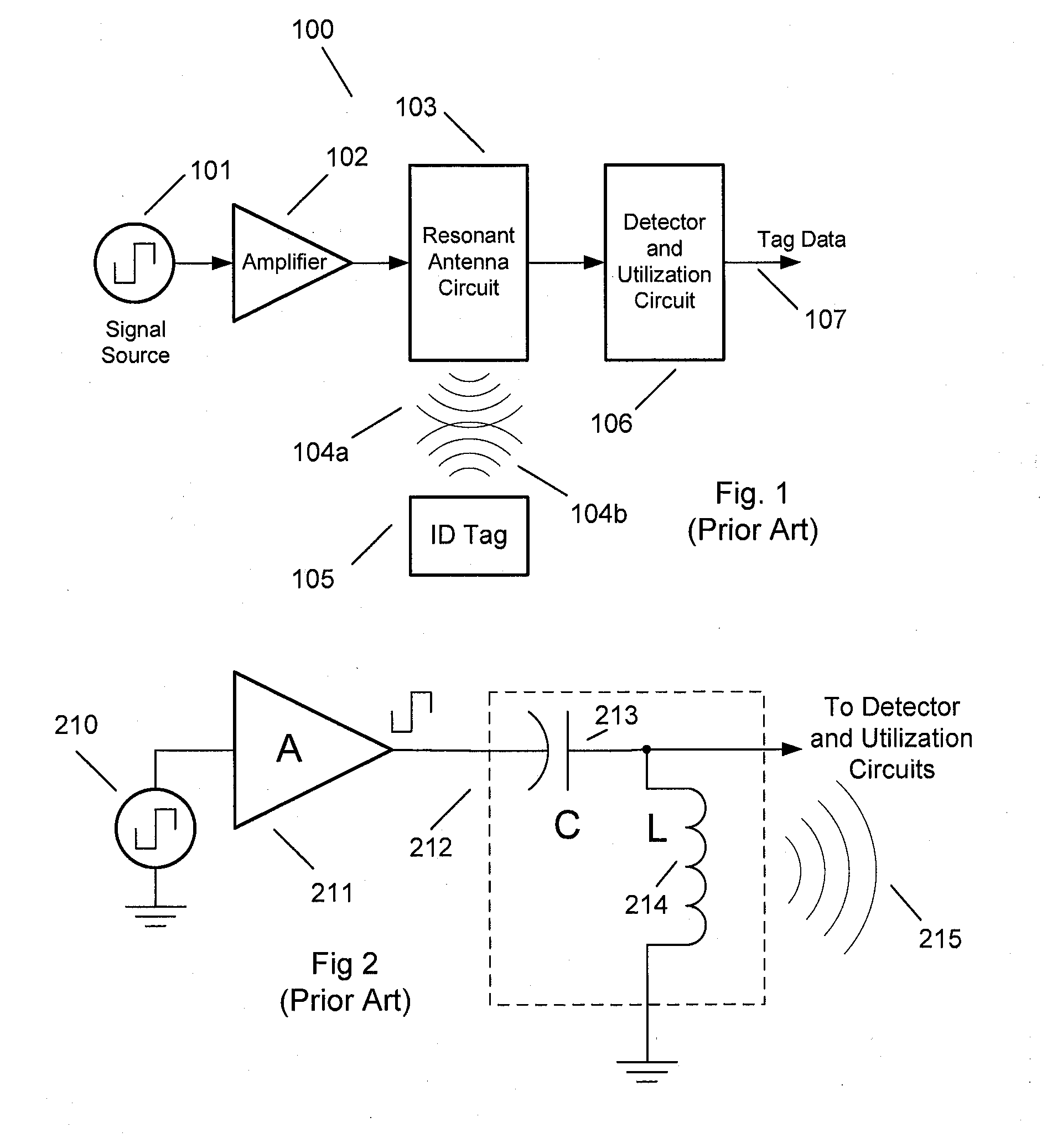Radio frequency identification reader antenna having a dynamically adjustable q-factor
a dynamically adjustable, radio frequency identification technology, applied in the direction of subscriber station connection selection arrangement, sensing record carrier, indirect connection of subscriber station, etc., can solve the problems of not optimizing for each individual function, unable to meet the needs of individual functions, so as to improve the effective bandwidth of tag data reception, improve the reading distance, and increase the efficiency of activation signal
- Summary
- Abstract
- Description
- Claims
- Application Information
AI Technical Summary
Benefits of technology
Problems solved by technology
Method used
Image
Examples
Embodiment Construction
[0055]Turning now to the drawings, systems and methods for reading RFID transponders utilizing readers in which the Q-factor of the resonant antenna of the reader shifts over the course of the reader's interrogation cycle in response to the detection of data from FDX and HDX RFID transponders in accordance with embodiments of the invention are illustrated. In several embodiments, a high Q-factor is used during the transmission of an activation signal and is shifted to a lower Q-factor in response to the detection of data from an FDX tag. In many embodiments, the Q-factor is further reduced during periods in which the activation signal is absent and in which data is detected from an HDX tag. In a number of embodiments, the RFID reader adjusts the Q-factor of its resonant antenna by switching conductors in a multi-filar antenna. In several embodiments, the RFID reader also adjusts the tuning of the resonant antenna during the interrogation cycle. In further embodiments, variations in ...
PUM
 Login to View More
Login to View More Abstract
Description
Claims
Application Information
 Login to View More
Login to View More - R&D
- Intellectual Property
- Life Sciences
- Materials
- Tech Scout
- Unparalleled Data Quality
- Higher Quality Content
- 60% Fewer Hallucinations
Browse by: Latest US Patents, China's latest patents, Technical Efficacy Thesaurus, Application Domain, Technology Topic, Popular Technical Reports.
© 2025 PatSnap. All rights reserved.Legal|Privacy policy|Modern Slavery Act Transparency Statement|Sitemap|About US| Contact US: help@patsnap.com



